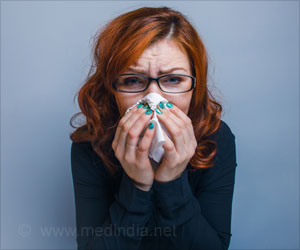Benznidazole Medication Information
Discover comprehensive details about Benznidazole, including its pronunciation, uses, dosage instructions, indications, and guidelines on how and when to take it or avoid it.
The updated prescription information covers potential side effects, precautions, warnings, and storage recommendations.
Additionally, explore the Benznidazole brands available in India and internationally, along with pricing information. For personalized advice, consult your healthcare provider.
Generic Name : Benznidazole Pronunciation : benz-NYE-da-zole Therapeutic Classification : AntiprotozoalsBrand Names or Trade Names of Benznidazole
India :
Radanil, Rochagan, Benznidazole tablets
Overview of Benznidazole
• Benznidazole is an oral antiprotozoal drug approved by FDA in August 2017 for treating Chagas disease or American trypanosomiasis caused by Trypanosoma cruzi.Why is Benznidazole Prescribed? (Indications)
Benznidazole is a nitroimidazole antiprotozoal agent prescribed to treat children of 2 to 12 years of age suffering from American trypanosomiasis or Chagas disease which is caused by Trypanosoma cruzi.When should Benznidazole not be taken? (Contraindications)
Benznidazole is not recommended in patients with• Allergy to benznidazole
• Pregnancy and breastfeeding as it cause teratogenicity
• Kidney or liver disease since it has not been evaluated in these patients
• Consumption of alcohol or products containing propylene glycol. Alcohol should be avoided for at least three days after completion of benznidazole treatment
• Disulfiram therapy taken within two weeks before starting benznidaloze treatment
What is the dosage of Benznidazole?
• Benznidazole of 12.5 mg and 100 mg tablets are prescribed depending on the patient's body weight.• The prescribed dose is 5 mg/kg to 8 mg/kg taken orally in two divided doses (every 12 hourly) for a period of 60 days.
How should Benznidazole be taken?
• Benznidazole comes in a tablet form to be taken by mouth along with food. The tablets can be swallowed with a sufficient quantity of water.• If children find the tablets difficult to swallow, the drug can be prepared in a slurry form by mixing with a necessary amount of water and should be taken immediately. The dosage cup can be rinsed with an additional 80 ml of water which should be drunk. The rinsing and drinking should be repeated twice.
• Symptoms of Chagas disease may show improvement even before the complete infection subsides. However, the benznidazole tablets should not be stopped suddenly and the duration of the treatment should be completed as prescribed.
• Do not take smaller or larger amounts of benznidazole tablets but take exactly as prescribed by the physician.
What are the warnings and precautions for Benznidazole?
• Girls of child-bearing potential should be advised the use of effective birth control measures during benznidazole treatment and the contraception should be continued for 5 days of the last dose of benznidazole. It is necessary to perform a pregnancy test before starting the treatment and the treatment should be initiated only when the results are negative.• Male patients must be alerted that the benznidazole treatment may cause infertility and should be advised to store their sperms in a sperm bank if required before initiating the treatment.
• Complete blood cell counts should be monitored during the benznidazole therapy since it can reduce blood counts.
• Serious skin reactions may occur usually after 10 days of starting the treatment and patients should be monitored for such signs and symptoms. Rashes are usually controlled after stopping the treatment.
• Neurological symptoms of dizziness or peripheral neuropathy may occur during the treatment and caution is necessary when benznidazole is prescribed to patients with nervous disorders.
What are the side effects of Benznidazole?
Common: Weight loss, rash, pain in the abdomen, headacheGastrointestinal: Loss of appetite, diarrhea, vomiting, nausea, pain in the abdomen, dry mouth
Central nervous system: Peripheral neuropathy, paresthesia, dizziness, headache, confusion, inability to concentrate, tremor. The treatment should be stopped if neurological symptoms appear.
Blood: Reduced blood counts of red blood cells, white blood cells and platelets, eosinophilia
Skin: Rashes, eczema, allergic or exfoliative dermatitis, itching, toxic epidermal necrolysis, erythema multiforme, peeling of skin. The treatment should be discontinued if the skin reactions are associated with lymph node enlargement, fever and/or purpura (small purple spots due to small bleeds under the skin).
Others: Edema, fever, muscle pain, hepatitis, fatigue, asthenia, allergic reaction, increased levels of alkaline phosphatase and bilirubin, joint pain
What are the other precautions for Benznidazole?
• Adverse reactions should be reported to the emergency center as early as possible.• Tablets of benznidazole should be taken at least after 3 days of stopping alcohol consumption to avoid disulfiram-like reactions such as nausea, headache, abdominal cramps, and flushing.
• Benznidazole 100 mg tablets are scored so that they are easy to break into either half or quarter as advised by the physician.
What are the Drug Interactions of Benznidazole?
• Disulfiram should not be taken with benznidazole because disulfiram-like or psychotic reactions may occur. Benznidazole can be given to patients who stopped disulfiram for more than 2 weeks.• Alcohol beverages and products containing propylene glycol should not be taken with benznidazole tablets due to the possibility of a disulfiram-like infection.
What are the storage conditions for Benznidazole?
• Store the benznidazole tablets at a controlled room temperature between 20°C and 25°C.• Keep the tablets in a tightly closed container away from excess light and moisture.







